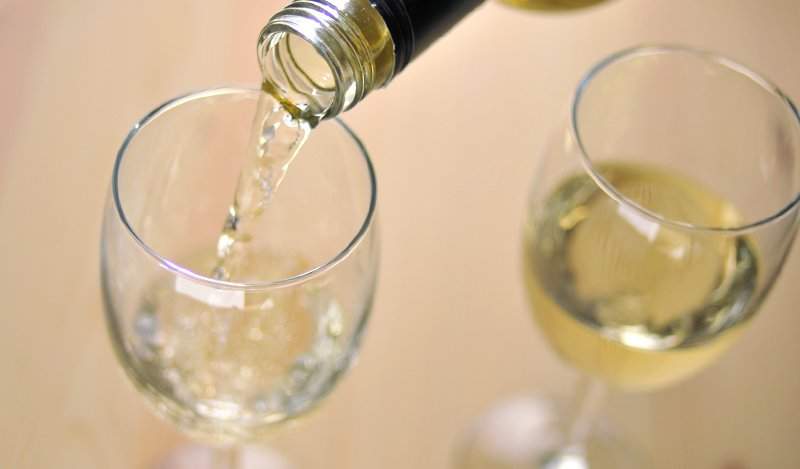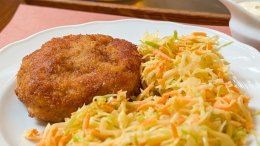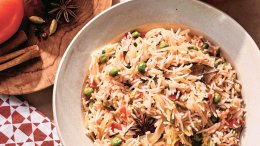Sharing wine is great — what's good, new and exciting in the world of fine wine. Here are some of the wine trends that I see continuing in 2014. They are all available for purchase in Canada.
The whole story
Wine isn’t made in a bubble. Of course, there is “terroir”, that sense of place that comes through in good wine. But, terroir also includes that human factor: the people involved who truly make a wine special. It might be a winemaker who dared to dream that his or her little slice of heaven could make a wine never attempted in that area; or a celebrity who, rather than just wanting to spend their millions on a winery, really care about making great wine. Even you can be the star of that story — your visit abroad to a wine country or your short vacation in B.C. or Ontario. Regardless of who the story centers around, the backstory of the wine, if you can get it, does make wine with friends taste even better.
What to try: Van Westen Viognier (Okanagan Valley, B.C.)
Meeting Robert Van Westen is an experience in itself. At what seems like seven feet tall, with a booming voice, he seems like the antithesis of a winemaker, but you talk to him for just two minutes and you realize he knows his land and knows how to make good wine from it. His viognier comes from this tiny, hardscrabble patch of vines miles removed from the “big” wineries in other parts of the world. I love it. Around $42.
Score matters less
Scores aren’t going anywhere, but we are seeing less focus on high scores. Robert Parker is still on top, but with so many people scoring wine, that at times, a high score is almost meaningless. It's not enough that “Parker gave it 94,” though such descriptions and recommendation seem to be the way to go. I still score wine from time to time, but I definitely prefer to write about wines I like and would be happy to pour at my table. High score not required.
Pinot gris/grigio is a grape that rarely gets a break. They are tasty, quaffable wines that pair well with food and taste great on their own, but they rarely garner the kind of high scores some other wines get. Maybe they’re too friendly, like that nice kid down the street when you were growing up — sure, he was sweet but you wouldn’t want to date him. One thing is for sure: even if they aren’t wines to write home about, they are wines that should frequent your table.
What to try: Voga Pinot Grigio (Italy)
With its distinctive straight-sided bottle and vertical writing, it looks like either a vodka bottle or a high-end water bottle to most people, but Voga is a brand that does pretty well. It’s fun, easy-drinking, with enough acids to give it a little character and pair well with any Italian-style cuisine that calls for white wine. I doubt it will ever get a “Parker 95”, but it’s an easy winner on the pocket and patio. $15.
Canadian alternative: Tinhorn Creek Pinot Gris (Okanagan Valley, BC)
Bright fruits with great acids and a touch of bitterness around the mid palate. A very, very tasty bottle of wine. $25.
Typical characteristics
I don’t always like surprises in my wine. I typically want recognizable flavours in my New Zealand Sauvignon Blanc, only a little oak in my Chablis, and Bordeaux that tastes like Bordeaux. Typicity is the name of this game. When I bring wine to a friend’s place and if I know they like Malbec, I want to bring a good one they’ll like.
Over the last few years or even decades, winemakers have had a world's worth of wine possibilities at their fingertips and the chance to try different styles (syrah/shiraz anyone?), but I think the pendulum will swing back a little to traditional styles with a modern twist.
What to try: Villa Maria Private Bin Sauvignon Blanc (Marlborough, New Zealand)
If this is the direction NZ Sauvignon Blanc is going in, I’m along for the ride. There are lots of typical character from NZ here, but with a rich melon fruit flavour profile and still plenty of lime citrus and mineral. Not to worry; there is a touch of grassiness or capsicum notes, but they just confirm that it is, in fact, a NZSB. About $17.
Canadian alternative: Tawse Echoes Riesling (Niagara Peninsula, ON)
One of the great rieslings of Canada and a whopping $18 or so. Lush varietal character, mineral, acids, and the elusive yummy factor.
Sweet reds
We are talking about trends, not necessarily trends I like. The Apothic (and friends) wine craze is here for a reason. The average consumer wants a sweeter, richer wine that looks good on the table, pairs well with food, and comes at a good price. Don’t like it? No problem; someone else does. Personally, I'm fine with recommending them, as they do exactly what they promise. Am I the particular target market for these wines? Of course not, but it doesn’t mean they aren’t good.
Sadly, I have not come across any Canadian examples doing this well. (Yet)
You may like: Apothic Red (California, United States)
It’s red wine. You can, in fact, tell by the redness. It's all berry fruits, mocha, vanilla, and a distinctively jammy character from start to finish. Tannins? Yes, it has them, but they are almost so smoothly integrated that you won’t really know where they start. It’s almost the perfect red wine for very casual wine drinkers. It's available in almost every nook and cranny where wine is sold, and for usually less than $15.
Value, value, value
I don’t know if I would really describe this as a trend, but value is and should always be on the tip of our tongues when we are buying wine. Value doesn’t mean cheap, but delivering appropriate character at a fair price. You should be able to get a decent bottle of wine from almost any region or in any style for $15 to $25; some a little lower and some a little higher, of course, but decent wine doesn’t have to break the bank. Granted, if your wallet lets you buy pricier wines, you can find some great stuff, but the $20-30 range has plenty of excellent wines. No one likes to overpay for wine.
What to try: Domaine Drouhin Vaudon (Chablis, France)
It's seriously a great buy in Chablis, and packed from bow to stern with all those classic flavours of French Chardonnay. It has bright apple fruits, mineral, a touch of steeliness, and it's hard to put down. For around $25, it is not a cheap wine, but it brings to the table a lot of character and distinction for a very good price. It’s the closest thing I have to a house Chablis at home.
Canadian alternative: Benjamin Bridge Brut Sparkling Wine (Nova Scotia)
I’m not going to call this Champagne, but this is one of the closest things I have ever tasted to Champagne without it being from the region. Beautiful toasty character, wonderful fruits with a little nuttiness, and all the style and character of the French stuff. $45
Blends
Of course we love our cabernets, merlots and chardonnays, but smart, sleek and sexy blends are where good value and exciting wines can be found. European wines are often blends and new world wines tend to be varietal wines, but that rule isn’t a hard or fast one. A smart blend is much greater than the sum of its parts, delivering a round, complex wine in balance from first sip to last drop. I’m far more likely to spend my wine-buying dollars on a blend incorporating some local varieties if I can get it. Portugal, Italy, and Spain are getting love from me this year, and some delicious blends are coming from Canada and Argentina as well.
What to try: Meandro do Vale Meão (Douro, Portugal)
It is no secret that I love a good blend and I’m drawn to those funky, earthy blends from Portugal. This bottle is based on the same grapes as Port, but without the sugar or added brandy. Touriga nacional, tinta cão, and other friends you may not know come together in a seamless blend of spice, earth, floral, herb and black fruits. Plenty of barbecue-friendly acids and meat-friendly tannins, too. $25.
Canadian alternative: Sandhill Cabernet Merlot (Okanagan Valley, BC)
I've been a long-time fan of Sandhill and love the value and flavour of its (only about $20) cab-merlot: all the oomph of cabernet with the right amount of merlot to bring a little extra plummy fruits; a great go-to bottle worth keeping a few around the house.













